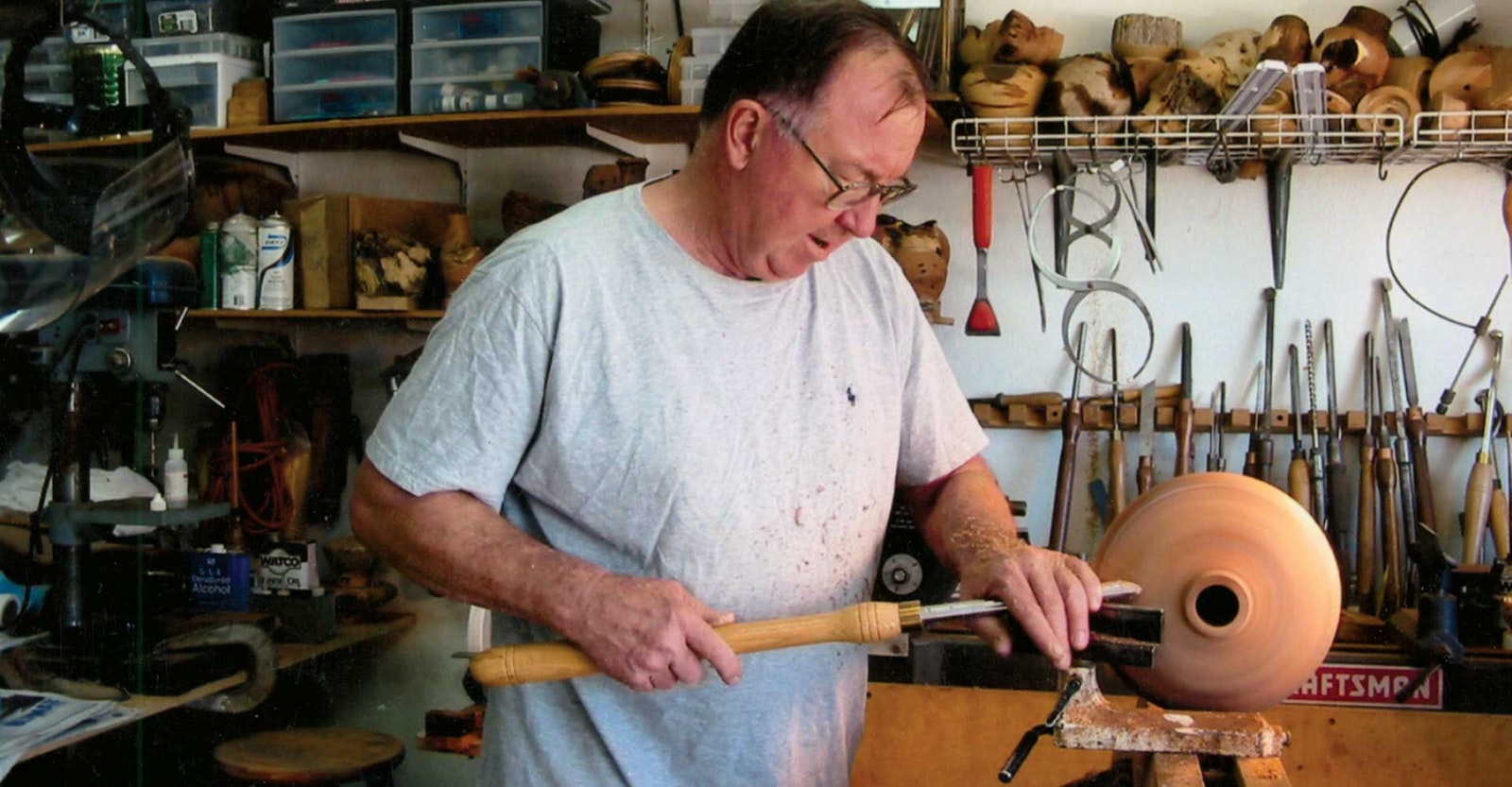The Winter 2025 issue of Spin Off features a stunning spindle by Ken Ledbetter of KCL Woods. The spindle, a mix of old and new materials, was purchased by Spin Off editor Kate Larson several years ago. Ken explained that the spindle shafts that came with this modular spindle (the shafts unscrew from the whorl) were reclaimed from the teak deck of a naval vessel, while the whorl was an especially beautiful bit of swamp oak. Read on to learn more about this beloved spindlemaker in this article that was originally published in the Summer 2012 issue of Spin Off. —Editors
Around 2005, a small group of Tucson, Arizona, handspinners approached woodworker Ken Ledbetter and asked him if he could make drop spindles. Ken looked through the plain wooden spindles they had brought as examples and shook his head. “I can’t make these,” he told them. “I make fancy stuff.”
Previously a tool and die maker at Boeing, Ken turned to woodworking as a hobby in the 1980s. He started out making picture frames by hand and selling them to art galleries, eventually opening two galleries with his wife, Carol, that they ran for several years. After selling the galleries and moving from Washington State to Arizona, Ken added woodturning to his repertoire of skills. Under the name KCL Woods, he produced objects that were both functional and artistic—bowls, pepper mills, bottle stoppers, and delicate, hollow Christmas ornaments.
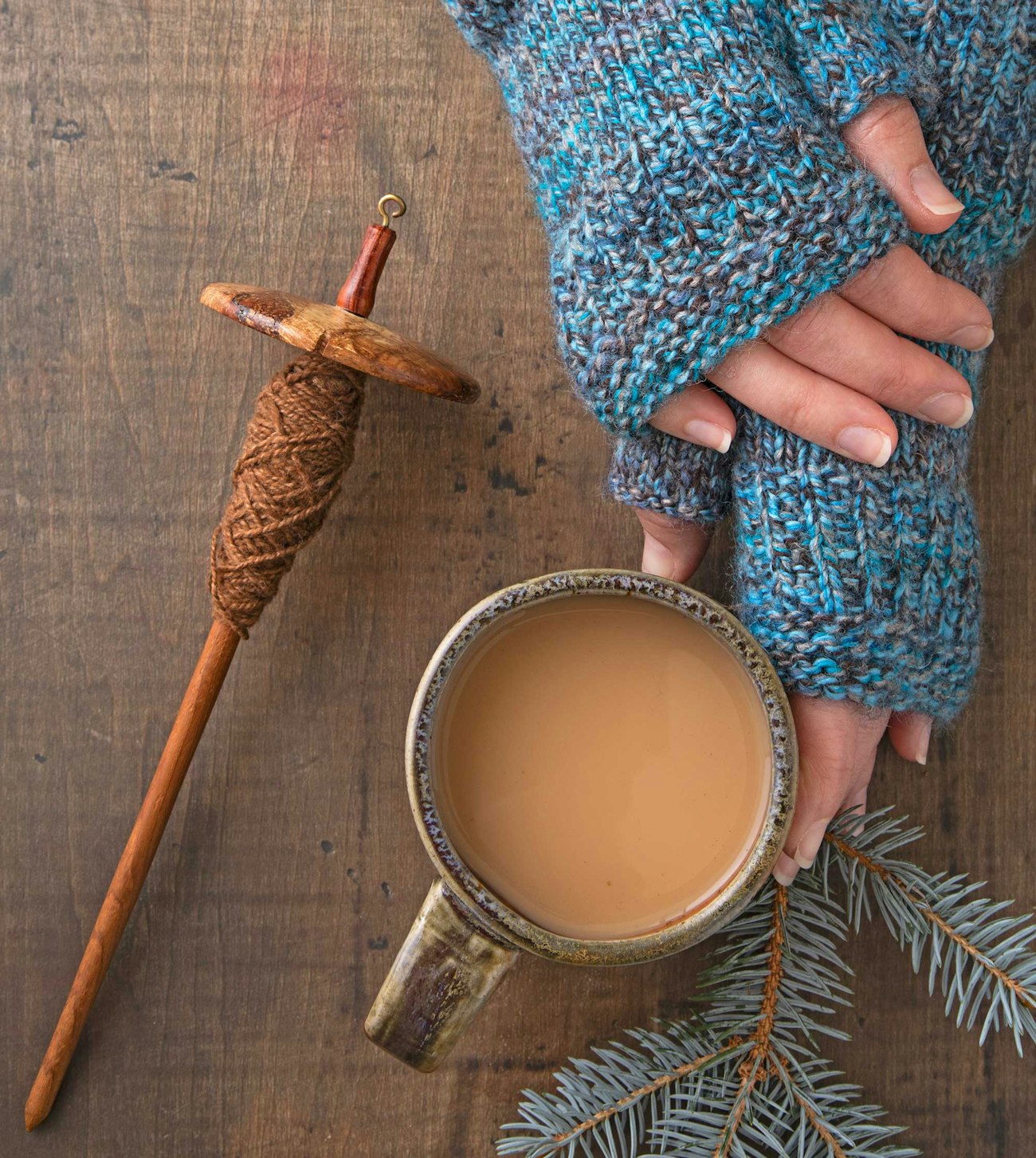 One of Ken’s modular spindles, which was featured on the cover of the Winter 2025 issue of Spin Off. Photo by Matt Graves
One of Ken’s modular spindles, which was featured on the cover of the Winter 2025 issue of Spin Off. Photo by Matt Graves
Ken successfully exhibited and sold his work in juried art shows for a number of years, but after the challenge from the spinners in Tucson, he turned his focus to tools for fiber artists. Once he made his first balanced spindles, he began to design new versions that were not only effective spinning tools but satisfied his aesthetic sense as well. An avid rock hound for most of his life, Ken frequently incorporated stones into his earlier woodwork, a distinctive feature that has carried over to his line of spindles. Innovation and an appreciation for beauty are the driving forces behind Ken’s work, which is now entirely aimed at the fiber-arts community.
Eye-Catching Designs
Before KCL Woods was a household name in the handspinning world, Ken’s spindles earned him a loyal—and growing—customer base. Perfectly balanced and usually inlaid with semiprecious stone, glass, and even Russian lacquered brooches, KCL Woods spindles are both precise spinning tools and works of art. “It’s in my nature—I like pretty things. I like fancy things,” says Ken of his preference for highly patterned woods and unusual inlays. Distressed mesquite rescued from firewood, painted clay disks, and even beadwork make for especially eye-catching spindles that have been extremely popular at wool festivals and other fiber-arts events.
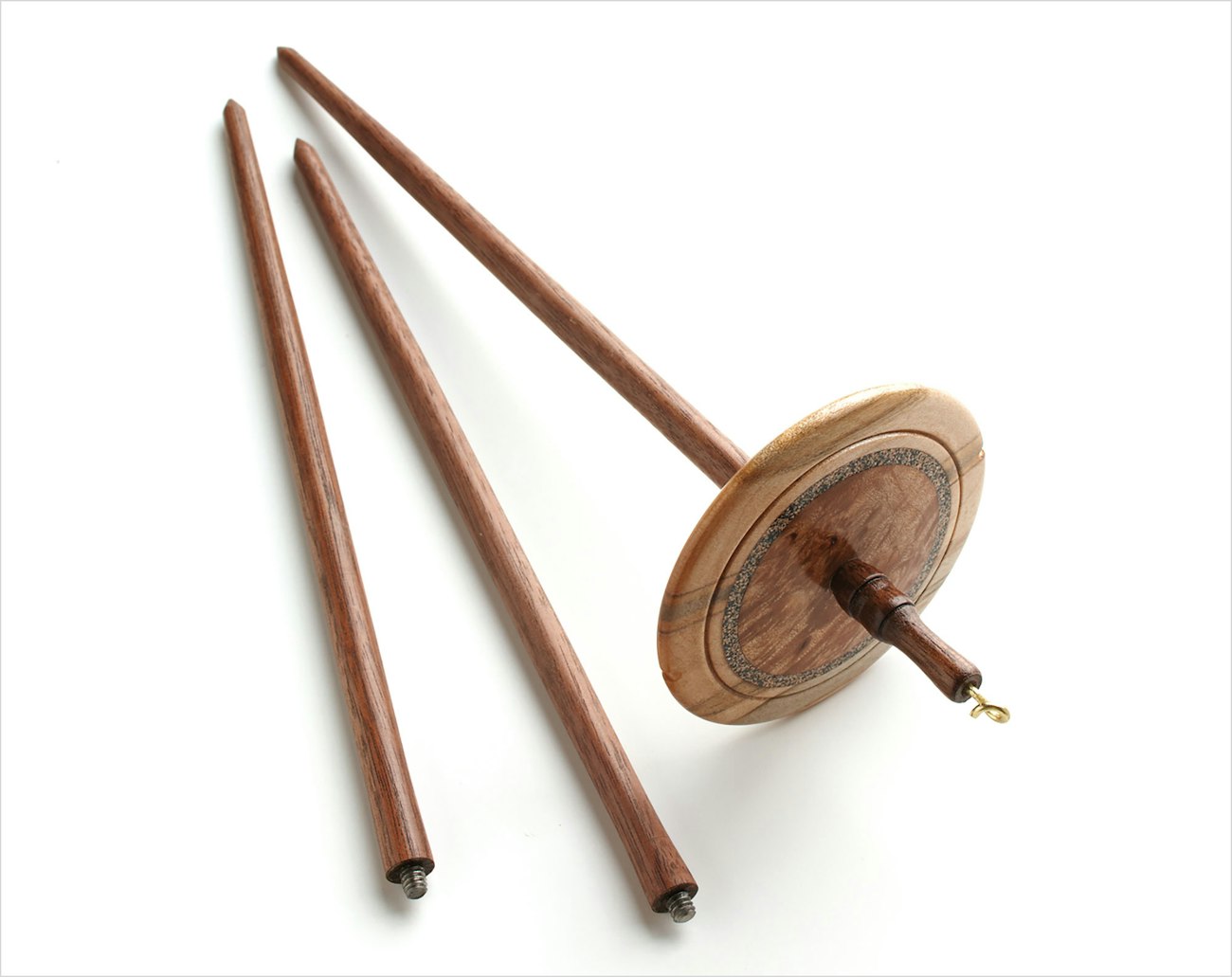 A KCL Woods modular spindle made from walnut and maple. Photo by Joe Coca
A KCL Woods modular spindle made from walnut and maple. Photo by Joe Coca
Ken spends about eight hours a day at his home in Arizona making spindles and other fiber-arts tools, which are sold through retail shops in the United States, England, and Australia as well as online. When not in his workshop, Ken is likely to be on the road with Carol as they travel to wool festivals across North America, averaging from six to eight per year. Ken aims to introduce at least one new spindle design at each event, and sometimes more—he premiered four new designs at Stitches West in early 2012. Rather than settling on a few set designs and producing copies, Ken is constantly striving to make his spindles better. “I’ve never made the perfect spindle, and probably never will,” he says. At any one time he may be working on three or four prototypes, trying to come up with improvements on classic designs or creating something entirely new.
Ken’s Innovative Approach
One of KCL Woods’s most successful products has been its modular spindle, which features a whorl with three identical interchangeable shafts. Made for the “spinner on the go,” the modular spindle allows for continuous spinning without having to stop and wind off the cop of spun yarn. The shafts can also be used for plying with a spindle kate; naturally, Ken produces his own kate, which can accommodate both his spindles and those made by other makers, and can also be set up to ply from spinning-wheel bobbins.
Another popular spindle is Ken’s take on the supported Russian spindle. He straightened the usually tapered shaft to keep the cop from flowing off too easily and added a brass tip for durability (now a feature on all supported spindles from KCL Woods). Not content with a strictly functional redesign, Ken turned the wood to resemble the towers of the famed St. Basil’s Cathedral in Moscow, inlaying a striped marble to evoke the church’s colorful onion domes.
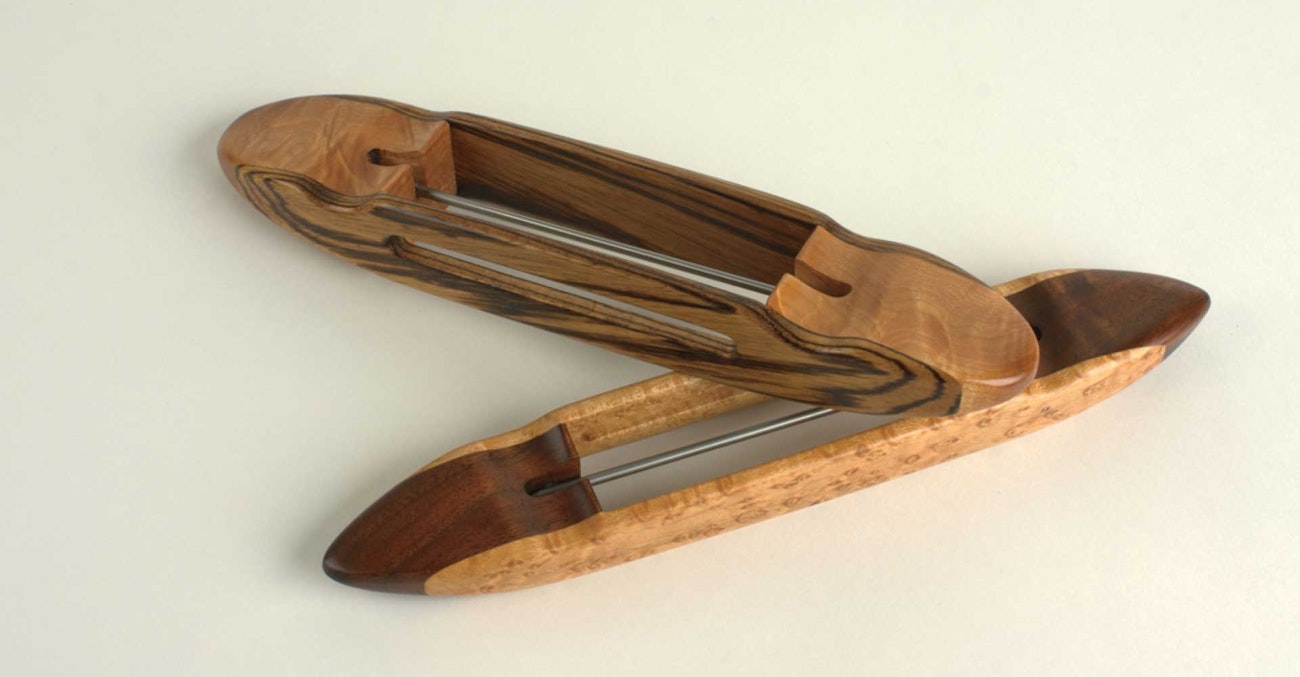 KCL Woods weaving shuttles. Photo by Joe Coca
KCL Woods weaving shuttles. Photo by Joe Coca
Besides spindles, KCL Woods sells other fiber-arts tools such as shuttles, nøstepinnes, and yarn bowls. The shuttles feature a thumbprint on each side to help weavers throw the same way every time. This design has found popularity with novice and expert weavers alike, becoming a fixture in the classrooms at the renowned Mannings Handweaving School in East Berlin, Pennsylvania. As for the yarn bowls, “We can’t keep them in stock,” says Carol.
Ken often partners with other artists in the creation of his spindles, whether it be through painting whorls or creating polymer clay flowers for his experiments in three-dimensional finials as spindle toppers. He also takes on custom work, such as incorporating an heirloom button into a spindle at a customer’s request. Whatever the design or the project, Ken is firmly committed to the quality and craftsmanship of his products. If a customer has a problem with an item from KCL Woods, Ken will repair it free of charge as long as the customer pays the cost of shipping. “I will fix anything that I make, forever,” he says, adding that this also helps him improve on his designs for the future. “If anyone has a problem, I want to hear about it.”
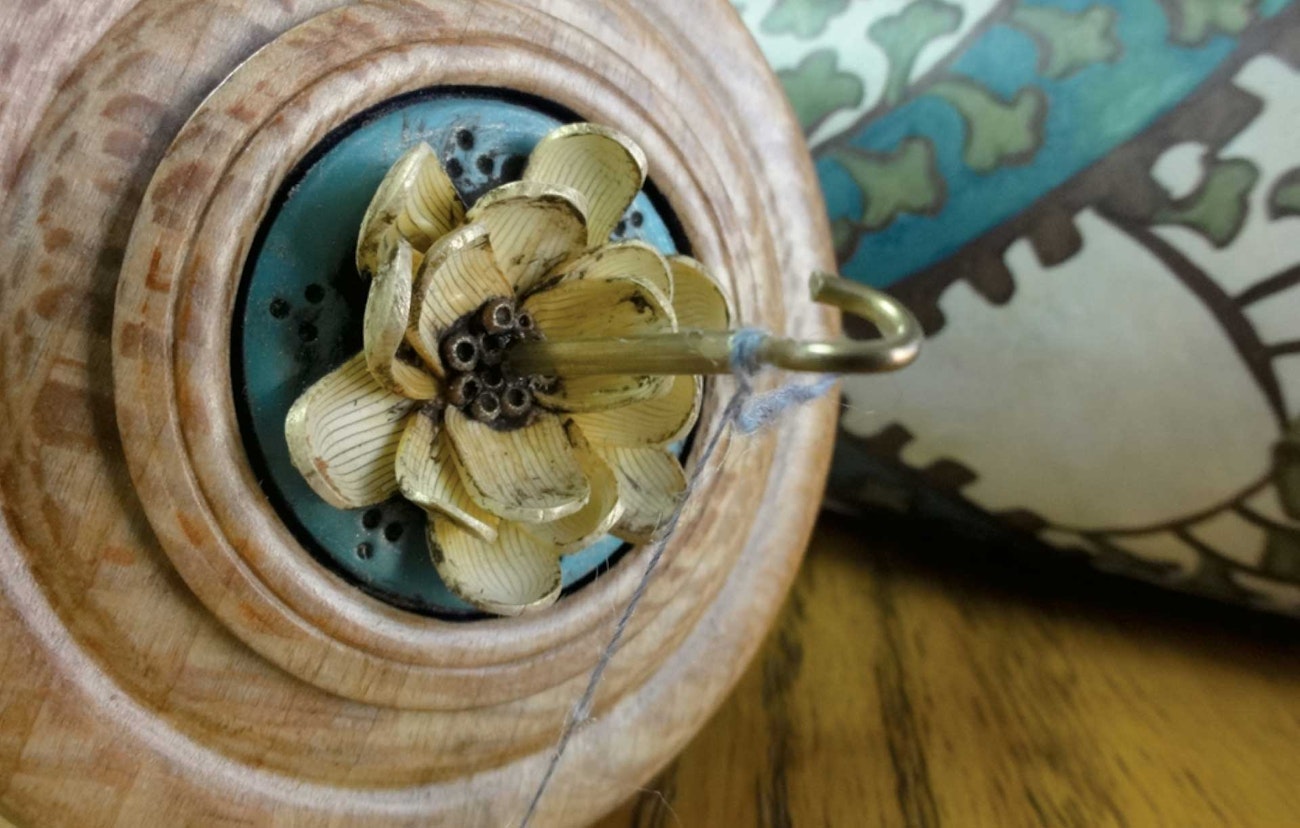 A KCL Woods spindle topped with a polymer clay flower by Kathy Canuel. Photo by Kathy Canuel
A KCL Woods spindle topped with a polymer clay flower by Kathy Canuel. Photo by Kathy Canuel
While Ken has found an outlet for his creative vision in KCL Woods, what ultimately drives his work are his interactions with those he describes as his “family of fiber people.” He welcomes and actively seeks out suggestions and feedback from spinners and enjoys the challenge of seeing if he can turn their ideas into workable—and beautiful—products. “That’s what makes it fun,” he says.
This article was first published in Spin Off Summer 2012.
Also, remember that if you are an active subscriber to Spin Off magazine, you have unlimited access to previous issues, including Summer 2012. See our help center for the step-by-step process on how to access them.
Currently working on a degree in genetics, Leslie Ordal still finds time to teach spinning near her home in Toronto, Ontario, Canada. Her fiber-arts endeavors are documented on her blog at www.leslieordal.com.

